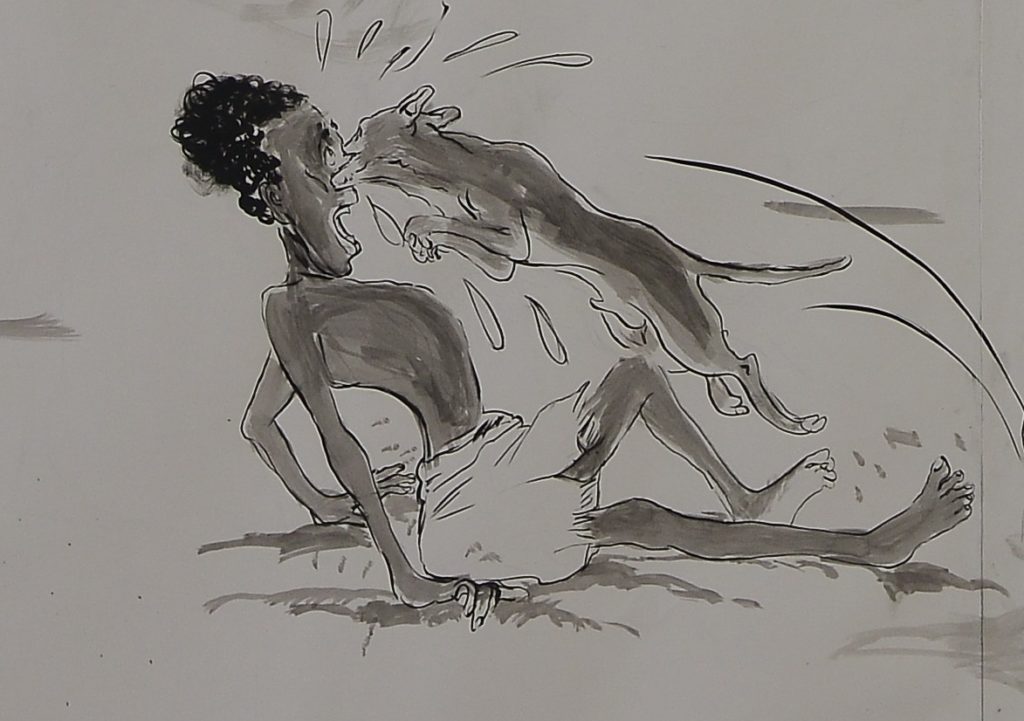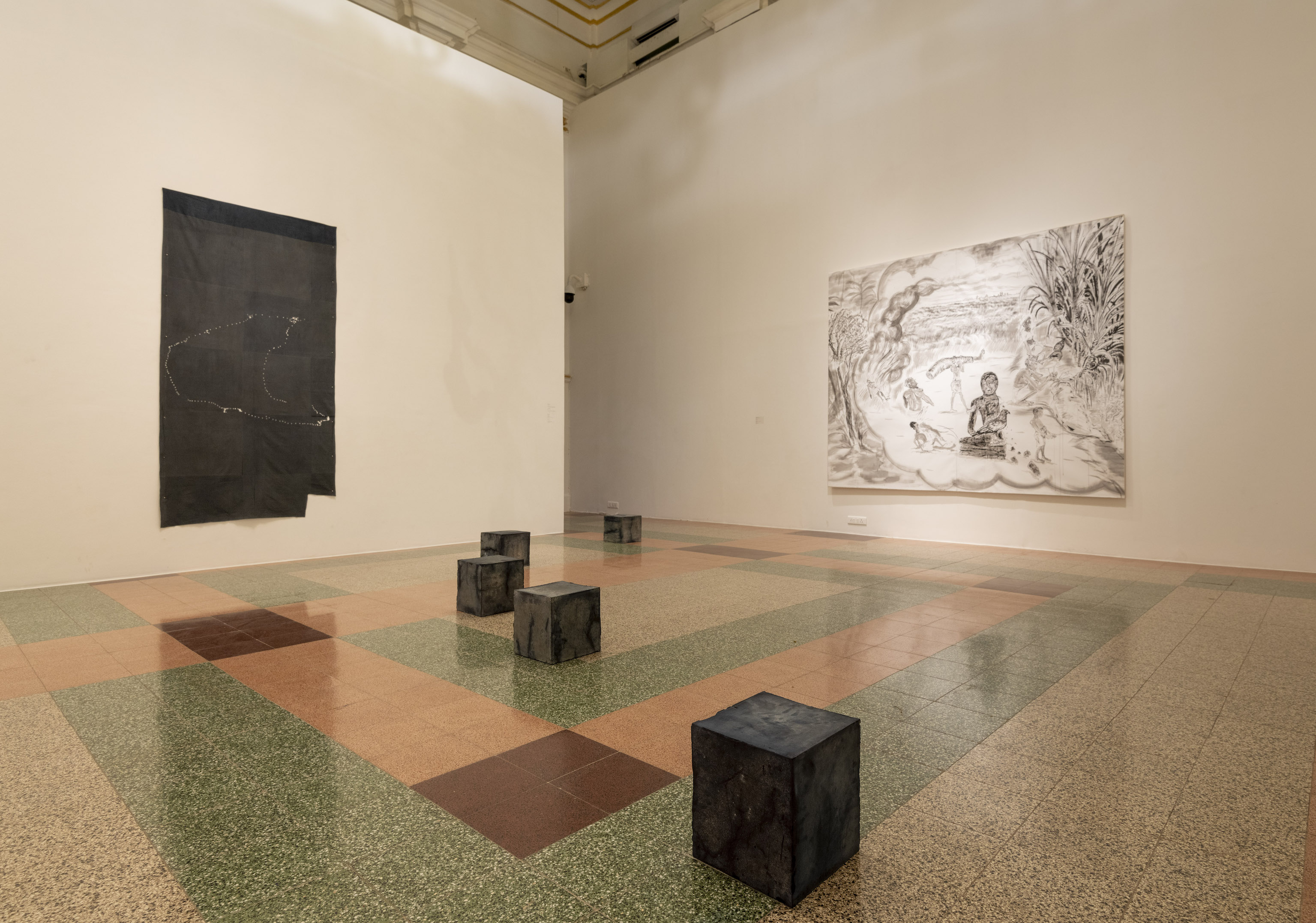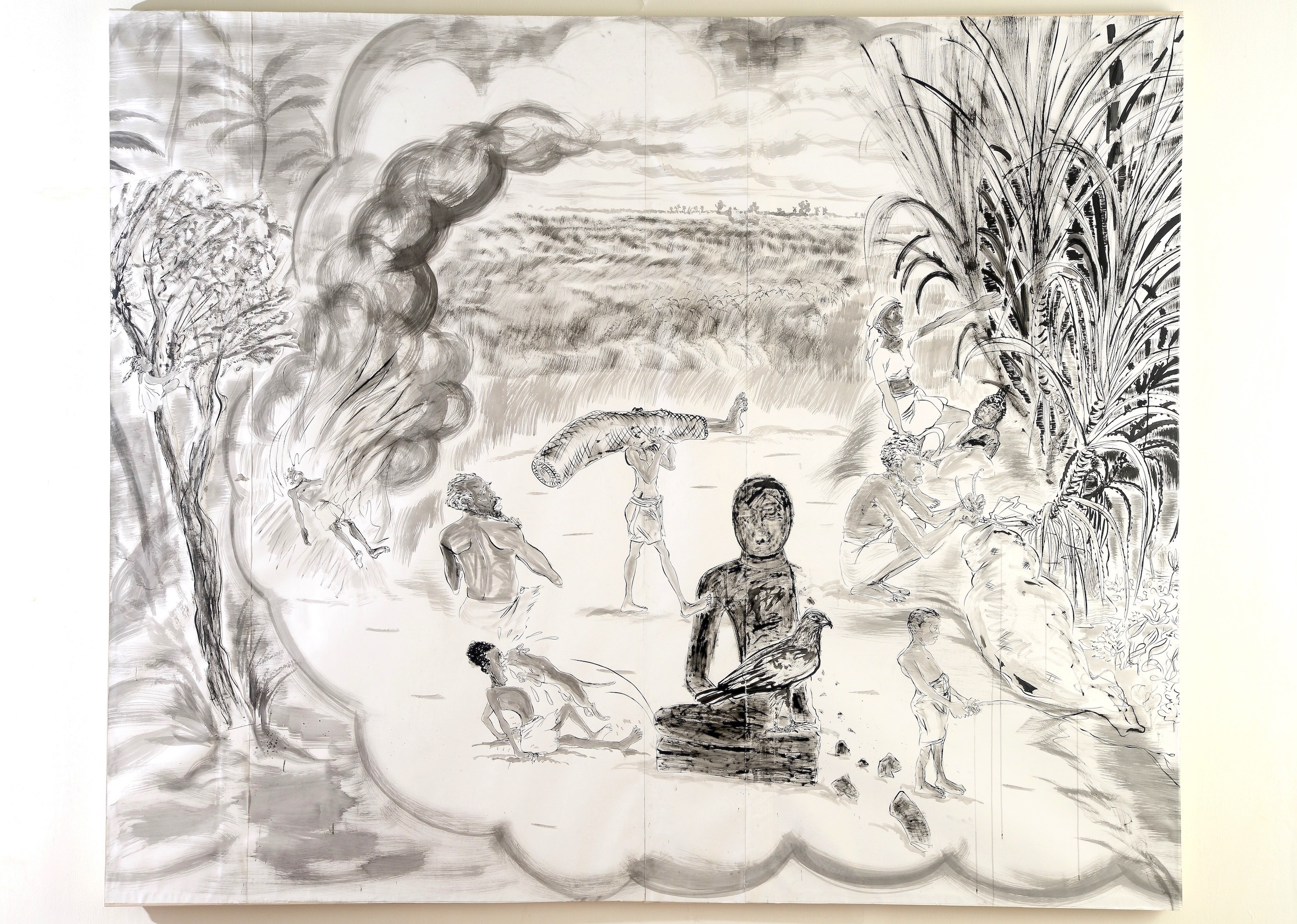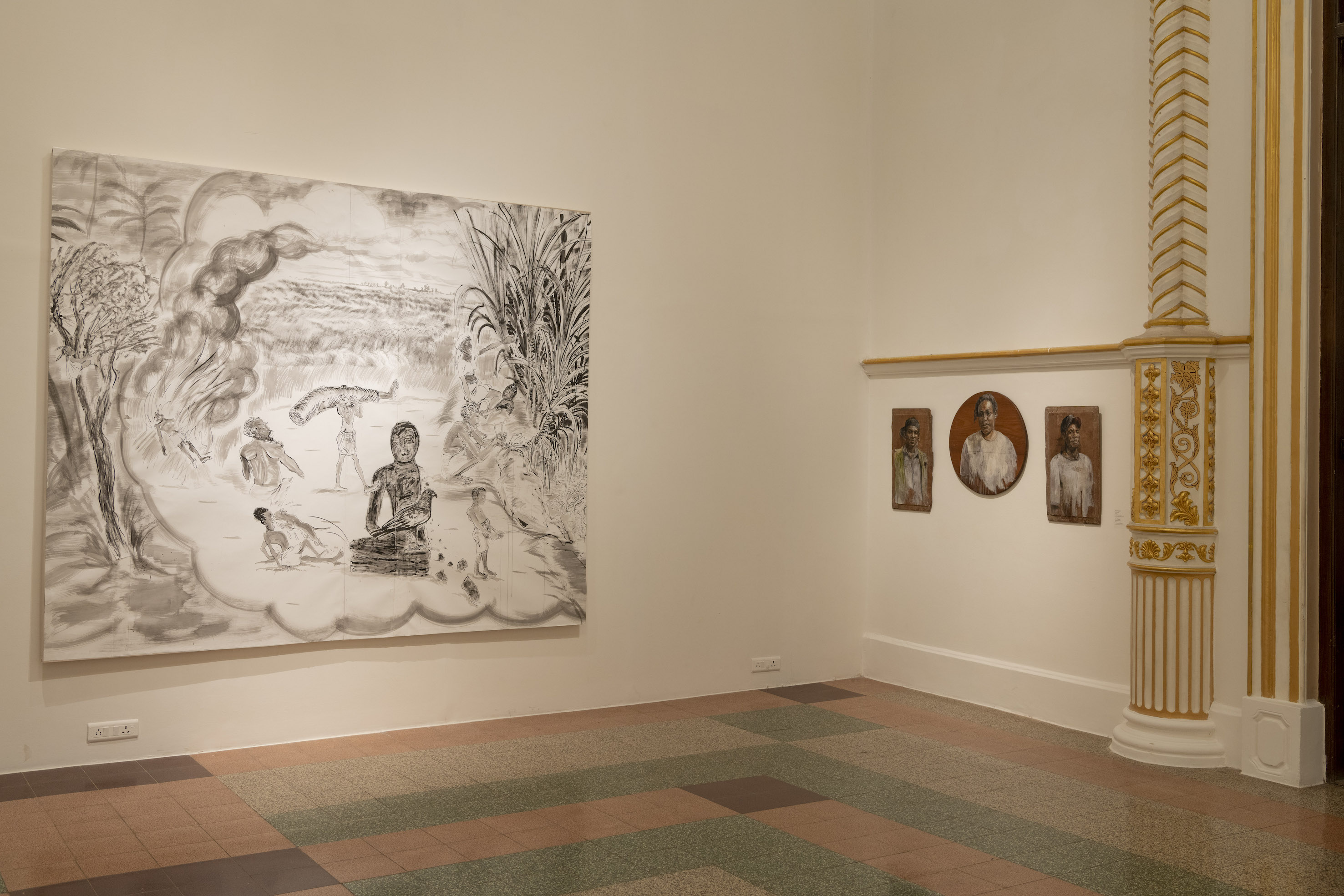Jithinlal NR

Jithinlal NR

– Nose Snatcher and Other Curious Tales, 2019
Ink on paper
Courtesy of the artist
Jithinlal NR’s large drawing Nose Snatcher and Other Curious Tales is inspired by the folk tales of the indigenous people of Kerala, the artist’s home base. The eponymous tale of the Nose Snatcher is part of these communities’ oral histories. Visually, the histories of the Dalits are exclusively preserved through anthropological photography produced by colonial administrators and the journals of the Christian missionaries. However, traces of these histories remain in indigenous folk songs and stories that are still shared. The story of the Nose Snatcher features a person born with a deformed little nose. Because of his nose, he is unable to find a bride and struggles to prove his worth to the other villagers. He finds a solution to his misery by abducting an upper caste white woman. In a humorous incident the abducted girl sealed inside a sack is replaced by a dog. As he reaches his village, he calls out that he has found a beautiful bride. While all villagers watch, he opens the sack. But instead of his beautiful bride, the dog jumps out of the sack and bites off his scrubby nose.
By contributing Nose Snatcher and Other Curious Tales to ‘Mindful Circulations’ Jithinlal introduces the folktale and its implicit memory of the caste experience in relation to colonialism to a wider audience. Jithinlal NR’s work centres around issues of Dalit emancipation, ideas expressed by Ambedkar and his neo-Buddhist movement, as well as the rights of indigenous peoples in Kerala. To engage with these themes, the artist applies his artistic talents to creating personal work that is part of a bigger social struggle for Dalit rights and their need to be treated as equal to all other social groups.
For his artistic work, Jithinlal NR adopted the subversive language of comic books to create a narrative framework for himself and other Dalit community members. His interventions in the historiography and representation of Dalits and indigenous peoples present a strong counternarrative to that spread by images made by colonial administrators which falsely portrayed these people as ‘backward’ or ‘primitive.’ This strategy was intended to rob these people of power and to justify colonial exploitation and enslavement of them. In the eyes of the artist, this was continued after the Independence of India when the colonial strategy was adopted by the upper caste administrators. Therefore, the art of Jithinlal is an act of emancipation and self-determination.
To Jithinlal NR, drawing is a medium that is ideally suited to representing the process of an identity in the making. In his drawings, he creates marks or traces and reveals what was concealed in what he once described as singular gestures that testify to a human presence that cannot be denied or obscured. His artistic practice embodies his identity formation. Nose Snatcher and Other Curious Tales depicts fragments of folk tales that remained in the artist’s memory. In the light of his contemporary political consciousness, the images depict the violence done to Dalits, who, for example, were forced to take responsibility for cleaning up dead bodies and, who were sold with the land like cattle to landlords. Colonial administrations supported the Hindu caste system, because it served their interests of keeping society segregated so that minorities could be exploited. As a child, Jithinlal heard folk tales from his grandmother which he says always remained with him. Likewise, he is haunted by the question of why the people in the stories always ended up left alone and broken.
In Nose Snatcher and Other Curious Tales, bits and pieces of stories come together in a monumental drawing filled with cultural references to the Kerala region. Keralan folk songs and tales are often about slavery. In the tales and in Jithinlal’s drawings, the figure of the all-observing eagle, the symbolic witness who has seen it all before, keeps reappearing. Nose Snatcher and Other Curious Tales also depicts the Karumadikkuttan, the broken Buddha figure in the small Keralan village of Karumadi.
India as a nation is often conflated with Hinduism, but the broken Buddha in Jithinlal’s drawing points to an important counternarrative to this view of India provided by the jurist and social reformer Bhimrao Ramji Ambedkar, whose ideas about neo-Buddhism as a way of breaking with Hinduism are a great inspiration to Jithinlal. As Hinduism discriminates against certain groups of people such as the Dalits, Ambedkar asks how religion could be used to emancipate people from entrenched social structures. He devised a new interpretation of religion as a way of breaking with discriminatory Hinduist structures. Although Ambedkar rejects ritualistic Buddhism, he was inspired by Buddhist ideas of becoming emancipated from given social structures and went on to develop neo-Buddhism, are interpretation of the religion that could break with Hindu social structures and segregation.





